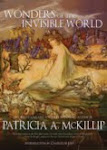
From the back cover:
“It’s the fall of 1837, and Lieutenant Marc Edwards of His Majesty’s 24th Regiment of Foot is now an old hand at his post in the colonial backwater of Toronto, Upper Canada. The local population seethes and buckles under the repressive hand of the new government, and Marc expects to see some action very soon. In the meantime, the arrival of a touring American theatrical company promises an enjoyable diversion, and Marc’s friend Rick Hilliard falls hard for a young actress. Events turn deadly when a rival for the ingenue’s affections is murdered, and a disheveled Hilliard is discovered standing over the body holding a bloody sword.
“Marc leaps into action to save his friend, joining forces with the rough-edged Constable Cobb. The two soon discover that the victim was secretly smuggling American rifles across the border and selling them to local radicals. Was this a crime of passion or a criminal transaction gone wrong?
“What Marc doesn’t realize is that both crimes will reveal incredible secrets about his own identity, and the outcome of the investigation will change Marc’s life forever.”
In the third novel of the Marc Edwards mystery series set in early Canadiana, more particularly 1837 during the famous rebellion of that year. With this Mr. Gutteridge aptly “sets the stage” for this mystery series, providing historical detail to give colour and motive for his well rounded characters.
Marc Edwards, Lieutenant of the British army, raised in privilege, continues to court Beth Smallman. Although she is outspoken on the financial situation with the merchants and farmers he finds himself making compromises. While considering a wedding date Edwards has concerns of uprooting her from Upper Canada to some far off country: the British colonies in Van Damien’s Land, India or the Caribbean.
Other returning characters are Rick Hilliard, an ensign, perpetually love struck with each woman he meets, certain “she” is the one; Horatio Cobb, Toronto constable, with personable rough characteristics and loaded dialogue guaranteed to bring chuckles.
Each of the new characters are introduced with enough description to keep the reader interested, especially when one of the actors is discovered murdered. One character in particular that I took a shine to was Dora Cobb, Horatio’s wife, who is a midwife.
As Marc Edwards carries out the investigation rather than the local police due to the victim being an American to avoid political repercussions, the clues begin to surface: some red herrings and others most intriguing. The ending does come as a bit of a surprise but fits in well with the norms of the time.
Vital Secrets follows nicely after
Solemn Vows. The next book in the series continues with the 1837 Rebellion in Lower Canada which should be as interesting as this one was. Historical novels provide an excellent way to reintroduce the reader to a time long ago.
Don Gutteridge taught English at the Faculty of Education, University of Western Ontario, before starting the Marc Edwards mystery series.
Review copy provided by Anneliese Grosfeld.
Book format: paperback, 321 pages
Author:
Don Gutteridge Publisher:
Simon & Schuster Canada Available at:
Also in ebook
chapters.indigo.caamazon.comamzon.ca






